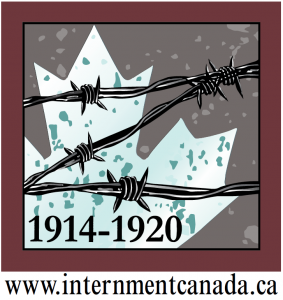A joint project bringing together instructors and students from Brandon University and Assiniboine Community College has received a grant of nearly $30,000 to begin building a virtual reality exploration of a First World War internment camp in Brandon.
 Research for the project was completed last year, with more than $4,300 in funding from the Canadian First World War Interment Recognition Fund. Now, the CFWWIRF has contributed $29,068 in additional funding to write a full script for the project and to develop the virtual reality design aesthetic package.
Research for the project was completed last year, with more than $4,300 in funding from the Canadian First World War Interment Recognition Fund. Now, the CFWWIRF has contributed $29,068 in additional funding to write a full script for the project and to develop the virtual reality design aesthetic package.
“This is an exciting project that will allow us to tell important stories from the past with modern immersive technology,” said Derek Ford, Interactive Media Arts Instructor at Assiniboine. “We are excited to partner with BU on this opportunity to showcase our combined knowledge and skills. Two recent graduates have been brought on to develop this project and both are graduates of our IMA program and the BU Fine Arts degree. They will represent our academic partnership and our ability to train and develop people to merge art and science into innovative storytelling.”
The interactive virtual reality project will delve into the Brandon camp in particular, using a “choose your own adventure” feel, says BU history professor Rhonda Hinther.
“Players’ choices will affect their experiences in the camp and give them a chance to interact with a variety of people involved with or interned in the facility,” Hinther said. “We are also looking to highlight the experiences of family and friends the internees left behind. For example, we are considering offering players the chance to select whether they are playing as male or female characters at the beginning of the game. Depending on which they choose, they will either explore in the game as an interned man in the camp, or as an internee’s female relative, trying to survive the war, perhaps on the homestead or elsewhere, without male support.”
She says the current phase of the project is to draft a full script, which will be written by award-winning Canadian filmmaker Aaron Floresco. In addition, the students involved on the project will develop a design guide for the project’s physical and emotional look and feel. A tentative third and final phase would be to conduct the interactive film’s shoots and then to build the application.
When completed, the full virtual reality interactive experience will take about 5–10 minutes to fully experience, depending on the participant. It will have both classroom and museum applications and will be available free of charge to the public, online and playable across a variety of platforms, including desktop computers and mobile devices, in both VR and traditional gaming formats.
“To our knowledge, no online digital interactives exist on Canada’s First World War internment operations,” Hinther said. “We will be making an original contribution to understandings of the WWI experience in Canada and, indeed, internment more broadly.”
The project also has potential to engage a variety of audiences in learning about Canada’s First World War internment operations — especially children and youth. Its game play will help make the content available to different styles of learners, for example those who are more visual learners and less inclined to pursue written sources of information.
In the future, the completed project will be made available to any museums who would like to include it in exhibits or web content, and it will help to inform wide audiences of the realities and impact of Canada’s First World War internment operations.
The First World War saw internment camps open across the country, as the Government of Canada began isolating so-called “enemy aliens” — immigrants who’d come to Canada from countries that were fighting against the British Empire. Those countries included areas under the control of Germany and Austro-Hungarian Empire, like Ukraine and Poland.
In Brandon, those foreign nationals were kept in barracks at the Wheat City Arena, a hulking open building at the corner of 10th Street and Victoria Avenue that was stacked with beds and filled with men to house hundreds of internees. In Brandon, the camp was open from 1914–16.
All records of the internment camps were destroyed in the 1950s, and the Wheat City Arena was demolished in 1969.
Assiniboine Community College has been providing exceptional learning experiences for more than 55 years. For staff and students alike, Assiniboine offers unparalleled learning environments, following the philosophy of ‘learn by doing’, which combines theory with hands-on learning inside classrooms, labs, kitchens, shops, fields and the college’s Sustainable Greenhouse.
Brandon University combines proud tradition with shared ambition at our growing, progressive campus, where we welcome a diverse and inclusive community. Through our excellence in teaching, research, and scholarship, we educate students to make a meaningful difference as engaged citizens and leaders. Our roots date to our foundation in 1899 as Brandon College, and through 2017–18 we celebrate the 50th anniversary of our charter as a university. Join us at BrandonU.ca
The Canadian First World War Internment Recognition Fund was established to support projects that commemorate and recognize the experiences of all of the ethno-cultural communities affected by Canada’s first national internment operations of 1914 to 1920.
Contact
- Brandon University
- communications@brandonu.ca
To receive any BU publication in an alternate format please contact Communications@BrandonU.ca
About BU
Success is built at Brandon University. Our growing, progressive campus welcomes a diverse and inclusive community that combines proud tradition with shared ambition. Through our excellence in teaching, research, and scholarship, we educate students to make a meaningful difference as engaged citizens and leaders. Join us at BrandonU.ca.